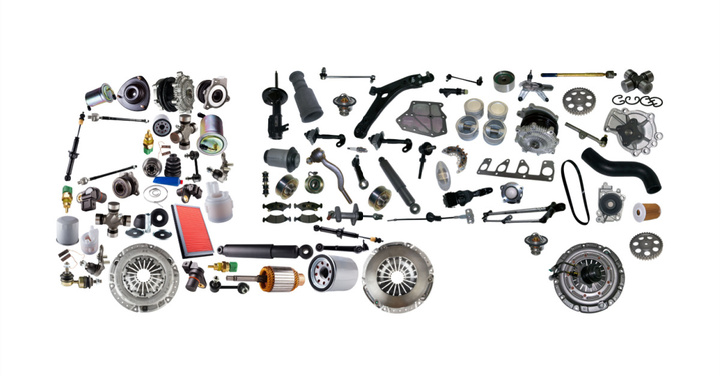
Auto parts shipping involves transporting all the parts of a vehicle, from the parts that make the car or truck go to those that make it safe to the body parts that make it look sleek. Some of the more common parts shipped are tires/wheels, axles, engines, bumpers, hoods, fenders, grills, and doors. The market size of the auto parts manufacturing industry has a revenue of $62.2 billion, which makes the transporting of those auto parts a significant factor in the shipping world. Without the shipping of auto parts, it would not be possible for more than 8 million vehicles to be produced in the U.S. alone every year.
With many of those auto parts, several factors make them trickier to ship. Concerns can include large sizes, unusual shapes, and the fragility of some products. Those concerns mean that it is crucial to follow the best practices when transporting them. This blog provides a list of those best shipping practices. Also included are things to consider when shipping auto parts, such as what kind of technology is available to help shippers and strategies to help them improve shipping auto parts.
As with all shipping, some factors must be considered when beginning the auto parts shipping process. But the transporting of auto parts has some unique concerns of its own. Here are a few of them.
As is typical with shipping any product, you want to partner with a reliable carrier. But with the varied and unique qualities of auto parts, it’s even more vital to have an experienced carrier that knows the auto parts shipping process and what it takes to transport this cargo. Dealing with high-quality and often intricate auto parts requires a carrier partner who understands how crucial it is to successfully deliver them to the correct destination and in excellent condition. Therefore, it is wise to invest time and energy into researching the reputation of potential carrier partners.
If any step in the process could be considered the most important, protecting the products during auto parts shipping is it. There are many places where this can go wrong; a part could arrive damaged cosmetically or to the point it is unusable. Here is a list of more specific auto parts and what packaging can protect them:
Some auto parts cannot be shipped because they contain hazardous materials (transmission fluid, brake fluid, battery acid). So it’s critical that you know what materials your auto parts are comprised of before you ship them. It’s also important to know what the international restrictions are for certain auto parts.
With some companies having multiple manufacturing locations and some assembling vehicles internationally for cost-cutting reasons, auto parts shipping entails extensive transportation with many rules to follow. Here is a list of some parts that can be transported, provided they do not contain fluid:
Batteries and airbags should not be delivered using the general courier service practices. You must follow standard safety procedures to minimize damage during transit.
There are many benefits to creating and following best practices when shipping auto parts. The following practices streamline productivity and help ensure your product arrives safe and sound at its final destination–resulting in higher customer retention.
As with every other facet of the shipping industry, technology is making a massive impact on auto parts shipping. Technology is making the shipping world more efficient in many ways and is particularly crucial to the advancement of communication and interoperability between the many sectors of the supply chain. Turvo, a world-class collaboration cloud-based platform offered by Zengistics, does just that. Turvo connects and indexes your entire supply chain, delivering data analytics and insights to help shippers, 3PLs, brokers, carriers, and customers improve performance. Auto parts shipping can prove even more vital because the average vehicle has tens of thousands of distinct parts, with most coming on different shipments from various sources. With systems like Turvo, it’s possible to keep tabs on all of those shipments — where they are and when they are scheduled to arrive — so that the arrangement of all of those components can be planned out and be ready for final assembly.
Technology can help in other ways as well. For example, automated order processing eliminates manual work, helps reduce human error, improves operational efficiencies, and speeds up the shipping process. Technology also provides a tracking system that can keep all parties in the loop and lets the customer feel like they are a part of the process, enhancing their experience.
There are plenty of ways to improve how you ship auto parts. As mentioned, best practices and technological innovations can help you raise your game. But some other strategies are worth looking into to improve your business:
Keeping an auto parts shipping business firing on all cylinders and having it pointed toward a bright future takes a great deal of work during these busy times. This article provided much information regarding auto parts shipping, including best practices and strategies. However, to truly take your business to the next level, you must have the right partner.
Zengistics serves the automotive industry with expertise and reliability to deliver shipments on time, without compromise. We manage the transportation of auto parts from raw materials to high-value electrical components. With Zengistics, shippers get dependable shipping and visibility to mitigate risk and avoid costly delays. We are dedicated to providing the custom services suppliers need—whether it’s expedited shipping, drop trailers, or round trips—and delivering quality with every shipment.
Take a free virtual demo test drive to learn more about how our collaborative logistics platform via world-class Turvo technology can help you achieve transportation optimization and lower costs.